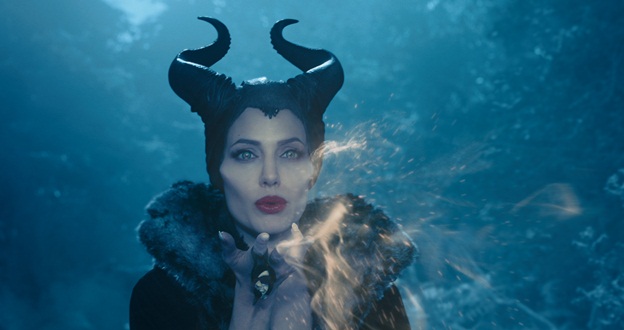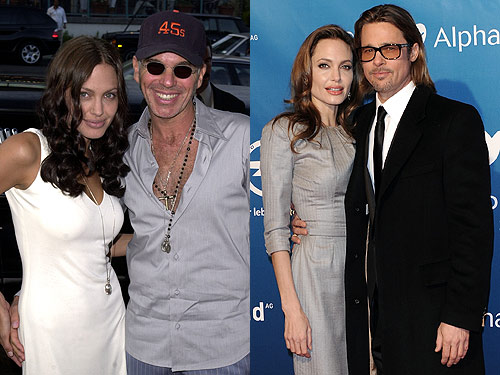The following is a review I originally published in Word and Film:
It’s hard to comprehend the career trajectory of Angelina Jolie. In the 1990s, she was the premier wild child, so fully in possession of her sexual powers that she seemed to do everyone a favor just by training her gaze upon them. When she announced she was “so in love with her brother” during her 1999 Oscar acceptance speech after jumping in a pool upon winning a Golden Globe earlier that season, two things seemed clear: We were all in her thrall. And none of us knew what she’d do next.
Certainly we never expected the girl with the blood vial necklace to evolve into such an upstanding citizen. In the ensuing years, she’s become a U.N. ambassador of goodwill, the doting mother of six, the long-term partner of Brad Pitt, the outspoken survivor of a double mastectomy, the director of mediocre message movies, and an actor. Arguably in that order. These days, the extraordinary promise she once exhibited on screen has mostly been eclipsed by a great puff of tabloid coverage even when she does appear in films. As of now, Maleficent, in which she plays the title character in a Disney retelling of Sleeping Beauty from the villainess’ perspective, is one of her last scheduled acting jobs. (She has announced her retirement before but might mean it this time.) This may be for the best. This sort of film hinges upon the voltage of the old Angelina – a ferocious, and ferociously gorgeous, creature who inspired equal parts fear and admiration in a whirl of feral improvisation – and Lady Jolie, though as visually compelling as ever, does not seem up to the task.
Instead, the true star of Maleficent is its lavish design. Director Robert Stromberg (the production designer of the equally lavish “Alice in Wonderland,” “Oz: The Great and Powerful,” and “Avatar”) has created a 3D netherworld of streams, meadows, caves, and forests that soars at us like an ever-shifting Mucha painting. It’s an effect so pleasing that for a while we don’t mind how little else commands our attention – not even Angelina’s already-impressive cheekbones, which are so digitally enhanced that other characters’ faces look downright doughy in comparison. This whole film hangs off her cheekbones.
The film begins with Maleficent as a young but already potent fairygirl (Isobelle Molloy) who flies about her magical kingdom settling disputes, healing trees, and crinkling her pointy features adorably. When a young thief trespasses onto the faerie turf, she can’t help noticing that his crooked smile matches her own as he returns a stolen shell. Soon enough, the two exchange “true love’s kiss.” But this boy – whose caddishness she should have espied in his beady little eyes (in the world of Disney, you can tell a book by its cover) – grows into a lout who drugs her with a sleeping potion and amputates her wings in exchange for the human kingdom’s throne.
Since the wronged fairy is by now played by Angelina, her despair should at least boast the three dimensions of the surrounding CGI-scape. Instead, it’s disappointingly tidy – anticlimactic, even – as she morphs into the malefactor who curses her ex’s daughter, Princess Aurora, to eternal sleep upon reaching sixteen. Of course, with her flashing green eyes and red, red lips, Angelina looks positively swoony in her be-horned, ebony satin getup – but her physical resemblance to the mighty celluloid sirens of yore (Joan Crawford, especially) only compounds our disappointment when she fails to channel them otherwise.
The resident pixie fairies – a gaggle of female Three Stooges incarnated amusingly enough by Imelda Staunton, Juno Temple, and Lesley Manville – squire Aurora to safety but the girl (played first by Jolie’s daughter Vivienne and finally by a flat-footed Elle Fanning) chooses the lurking Maleficent as her true “fairy godmother.” It’s not clear why, outside of the pixies’ inept caretaking. (Honestly, they wouldn’t survive an initial supervisory visit in the modern fostercare system.) Goddess knows the villainess warms up to the admittedly dull-witted princess no more convincingly than she mourns her lost wings. Or lover, at that.
Without introducing any spoilers, I will say that this film’s first line – “Let us tell an old story anew and see how well you know it” – may be unintentionally portentous. As Maleficent dawdles along (it seems longer than its ninety-seven minutes), it not only veers from Disney’s traditional values but also – alas, alack – from the studio’s recent foray into girl power (Brave, Frozen). This upside-down “Sleeping Beauty” may stab at female liberation themes – sisters before misters, the celebration of chosen rather than biological family, and the de-demonization of formidable women – but none of them land with anything but a thud. Sure, these heroines remain unchained and conscious longer than in most fairy tales but it’s a shame that the wicked Maleficent expends all her magic upon avenging a schlemiel she should have written off as wickedly lame. Don’t we women have better things to do? More to the point, doesn’t Angelina?

